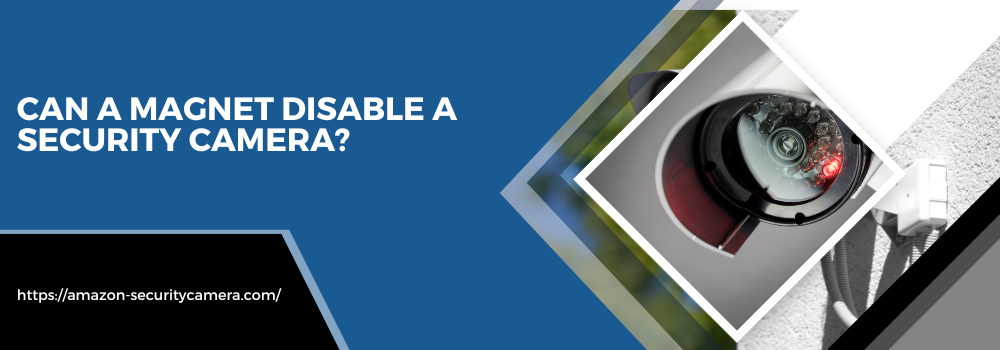Security cameras, a ubiquitous and quintessential element of modern surveillance systems, possess a rich and intriguing history. When were security cameras invented?Their invention can be traced back to the mid-20th century, although the technology and purposes they serve have dramatically evolved since then.
The concept of surveillance systems started taking root with the development of closed-circuit television (CCTV) systems. These early renditions of security cameras were primarily used in high-security zones such as banks, military facilities, and government establishments, forming a vital part of their security infrastructure.
In the subsequent decades, the evolution of technology has led to security cameras becoming more compact, sophisticated, and accessible to the general public. Today, they are an integral part of our everyday lives, ensuring safety in homes, offices, and public spaces, and even aiding in law enforcement.
Table of Contents
The Early Days of Security Cameras
The inception of security cameras dates back to the 1940s. In this era, cameras were bulky and expensive, limiting their usage to high-security establishments such as banks and military facilities. These limited applications, however, were instrumental in highlighting the potential of surveillance technology in enhancing security.
Despite the challenges associated with early surveillance systems, the technology quickly gained traction. CCTV systems were the first notable advancement in this field. They allowed for continuous monitoring of a particular area, marking a significant improvement from the static cameras that were common at the time.
The Advent of Color Surveillance Cameras
The introduction of color cameras in the 1970s marked a significant milestone in surveillance technology. These cameras provided clearer, more detailed footage compared to their black-and-white counterparts. Color surveillance cameras became popular in areas where identification was key, such as banks and airports.
However, the high costs associated with color surveillance cameras made them less accessible for home and small business use. It was only until the 1980s, with the introduction of cheaper manufacturing techniques, that these cameras began to be widely used in various settings.
The Surge of Digital Surveillance Cameras
The digital revolution of the late 20th century brought about a significant shift in surveillance technology. Digital cameras enabled the storage and transmission of vast amounts of data over the internet, enabling remote surveillance and making security systems more accessible and affordable for the general public.
This transformation radically changed the security landscape. Suddenly, businesses and homes could implement surveillance systems that were previously out of their reach. This widespread adoption of digital surveillance technology played a role in deterring crime and enhancing public safety.
The Future of Security Cameras
Looking ahead, the future of surveillance cameras is bound to be shaped by advancements in artificial intelligence and data analysis. These technologies have the potential to make security systems smarter and more efficient, capable of real-time threat detection and immediate response.
However, the increasing sophistication of surveillance technology raises questions about privacy and ethics. Striking a balance between security and personal freedom will be an ongoing challenge in the years to come. The debate around this issue is likely to shape the future direction of surveillance technology.
The Role of Legislation in Shaping Surveillance Technology
Understanding the importance of legislation in the realm of surveillance technology is paramount. From regulating the use and deployment of security cameras to defining privacy rights, the law plays a significant part in dictating the direction of surveillance technology.
Surveillance in the Age of Smart Cities
Exploring the impact of surveillance technology in the development of smart cities is a fascinating aspect. With cities worldwide increasingly integrating technology into their infrastructure for improved efficiency and safety, surveillance cameras play a crucial role in this transformation.
The Impact of Surveillance Technology on Crime Rates
Analyzing the relationship between the prevalence of surveillance technology and crime rates could yield insightful findings. The perceived deterring effect of surveillance cameras on criminal activities is a key area of investigation.
The Evolution of Surveillance Cameras
A retrospect on the evolution of surveillance cameras, from the rudimentary analog systems to the sophisticated digital ones, will help understand their journey and anticipate future trends.
The Intersection of Surveillance and the Internet of Things (IoT)
Examining the role of IoT in the advancement of surveillance technology can provide a glimpse into the future of security systems. IoT enables a higher level of integration and automation, which can revolutionize surveillance capabilities.
Ethics and Privacy Concerns in Surveillance Technology
The ethical implications of surveillance technology and the need to balance security with privacy rights is a crucial aspect that cannot be overlooked. Discussions around data protection, consent, and transparency are ongoing as we navigate the expanding use of surveillance systems.
The Future of Surveillance Technology
As technology continues to advance and shape our world, it is safe to say that surveillance technology will also evolve and adapt. The potential for new innovations and the impact they could have on crime rates, privacy concerns, and societal norms is an intriguing prospect.
The Role of Artificial Intelligence in Surveillance
The integration of artificial intelligence systems in surveillance technology has the potential to profoundly change the way security measures are implemented. It is worth investigating how AI can enhance the efficiency and effectiveness of surveillance operations.
Surveillance Technology in Public Spaces
Understanding the use and impact of surveillance technology in public spaces – parks, streets, and public buildings – can offer insights into its effectiveness in maintaining public safety and deterring crime.
The Economic Implications of Surveillance Technology
Analyzing the economic implications, including the cost of implementation and potential return on investment, can provide a comprehensive view of the feasibility of widespread surveillance technology.
Case Studies: Surveillance Technology in Major Cities
Looking at case studies of major cities where surveillance technology has been widely implemented can yield concrete data on the effectiveness of these systems in preventing crime and enhancing security.
The Balancing Act Between Safety and Privacy
Surveillance technology presents a delicate balancing act between safety and privacy. The future of such technology must carefully consider this balance to ensure that the benefits do not infringe on fundamental human rights. Continued research and discussion on the impact of AI in surveillance is crucial to creating a responsible and effective approach to public safety. So, it is imperative that governments, businesses, and individuals work together to shape policies that promote the ethical use of surveillance technology while also safeguarding privacy rights. By doing so, we can harness the full potential of AI in surveillance for the greater good.
Conclusion
In conclusion, surveillance technology has the potential to greatly impact public safety and security. However, its implementation must be carefully considered taking into account economic feasibility and ethical implications. With continued research and responsible policies, we can strike a balance between safety and privacy while utilizing the advancements in AI for the benefit of society as a whole. It is up to us to shape the future of surveillance technology and ensure its responsible use for the betterment of our communities. So, let us continue to have open discussions and critical thinking about the role of surveillance technology in our society. Together, we can create a safer and more secure world while respecting individual rights and privacy. We must remember that the power of technology lies not just in its capabilities but also in how we choose to use it. The future is in our hands, let us use it wisely.
So, the next time you encounter surveillance technology, take a moment to consider its implications and potential impact on society. Let us strive towards harnessing the power of AI for the greater good while also safeguarding our fundamental rights.
FAQ
Q#1: Is surveillance technology ethical?
A: The ethics of surveillance technology depend on its purpose and implementation. It can be used for both good and harmful intentions, making it crucial to have responsible policies in place to address any potential ethical concerns.
Q#2: Can AI in surveillance be used for mass surveillance?
A: Yes, AI has the capability to analyze large amounts of data and can be used for mass surveillance. However, it is important to have strict regulations and ethical guidelines in place to prevent any misuse of this technology.
Q#3: Does the use of surveillance technology violate privacy rights?
A: It depends on how the technology is used. When implemented responsibly with proper safeguards in place, surveillance technology can help protect public safety without violating individual privacy rights. However, it is crucial to regularly review and update policies to ensure that privacy rights are not being infringed upon.
Q#4: Can individuals protect themselves from surveillance technology?
A: While it may be difficult to completely shield oneself from surveillance technology, there are steps individuals can take to protect their privacy. This includes using strong encryption methods, being cautious about sharing personal information online and staying informed about privacy laws and policies.
Q#5: What are some potential future developments in surveillance technology?
A: With advancements in AI, it is likely that surveillance technology will continue to evolve and become more sophisticated. This could include the use of facial recognition technology, biometric data analysis, and predictive analytics.



